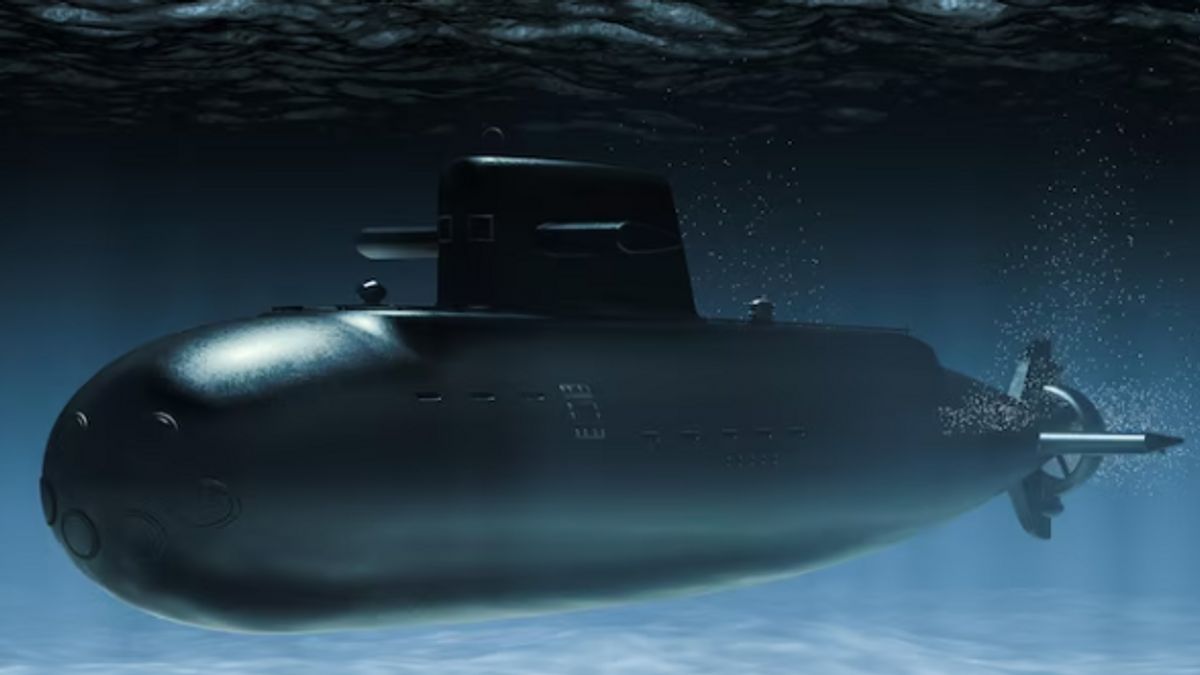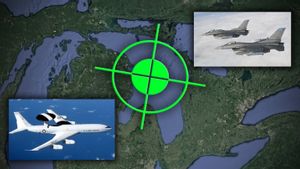YOGYAKARTA - Titan's tourist submarine experienced an explosion when it entered the water depth of thousands of meters. OceanGate Inc's Titan submarine is thought to have been destroyed due to enormous water pressure. Tragedy has made the public wonder how many in submarines can dive?
The submarine carrying the five explorers was found in a shattered condition. No survivors were on their way to the fireplane on the bottom of the North Atlantic Ocean. The destroyed ship's debris was found at a depth of 4 kilometers, which is located 488 meters from the wreck.
The discovery of the debris proves the occurrence of a powerful explosion on the Titan tourist submarine. Although submarines are transportation that can operate in the sea, they have an ideal boundary for safe diving depth. Then how many in submarines can dive?
The depth of safe or ideal dives for each submarine has been known by the engineers involved in making ship designs. The maximum water depth limit can be known from the type and operational capabilities of the submarine. However, if there is an accident outside the design factor, it is not known how much depth is safe or precise.
The age of the submarine's hull and the extent to which the submarine goes down the water depth are another factor that affects the ship's resistance. The age of the submarine's hull is related to the immersion cycle. Each submarine operates or enters deeper water, the lifespan of the hull will decrease or be shorter.
The hull's age can also be reduced when the ship enters beyond the water depth that has been determined for safe operations. The submarine has a significant amount of depth, test depth, and is expected for submarines to be reached without any operational adverse effects.
The latest general literature states that the test depth of the US Los Angeles class submarine is 450m or 1,500 feet, and shows a maximum depth of 675-900m (2,250-3000 feet). An example of this ship is a submarine with a pressurized hull made of high-HY-90 steel attraction. The latest production American submarine is made using HY-100 material, so it can dive even deeper.
A number of submarines made by Soviet/Russia use Titanium material, which is stronger but more fragile than steel. For Project 605 class, it is known to have reached 1,000 m or 3,300 feet, which shows a maximum depth of 1,500-2,000 m (5,000-6,600 ft).
Class Typhoon: Test Depth 900 m (3,000 ft)
Borei Class: 950 m Test Depth
Class Akula: Test depth 480 m (1,570 ft) for Upgraded Akula I and Akula I, 520 m (1,710 ft)
Rubis Class: Test Depth 350 m
Class Barakuda: Test Depth >350 m
Smart Class: More than 300 m (984 3 inches)
for Akula II and III, the maximum operating depth is 600 m (2,000 feet)
Ohio Class: Test Depth >240 m (800+ feet)
Virginia Class: Test Depth >240 m (800+ feet)
Type 212 Class: Test depth is 250 m (820 ft), collision depth of more than 700 m (2,296 ft)
Yuan Class: The depth of the test is 550 m
Type 209-class: 500 m (1,600 feet)
Type 214 Class: Operational Depth is officially more than 250 m (820 ft), estimated at 400 m (1312 ft), test depth is nearly 400 m (1,300 ft)
Scorpene class: > 350 m (1,150 ft)
Kilo Class: Operating depth is 240 m (790 ft), maximum 300 m (980 ft)
The largest military-style submarine that dived the deepest was the Soviet submarine K-278 Komsomolets. This submarine has a hull made of Titanium making it very expensive but able to withstand much deeper protection from high-quality steel. The Komsomolets nuclear submarine is specially designed to travel 1,300 meters (4,265 feet) below sea level.
Such is the review of how many submarines can dive. The maximum operational depth limit for each submarine can vary depending on the quality of the material, design, to the water depth reached.
Stay up to date with the latest domestic and other overseas news on VOI. You present the latest and most updated nationally and internationally.
The English, Chinese, Japanese, Arabic, and French versions are automatically generated by the AI. So there may still be inaccuracies in translating, please always see Indonesian as our main language. (system supported by DigitalSiber.id)













